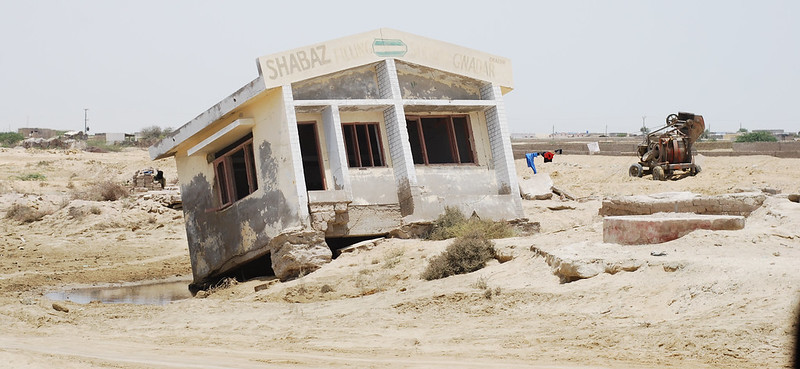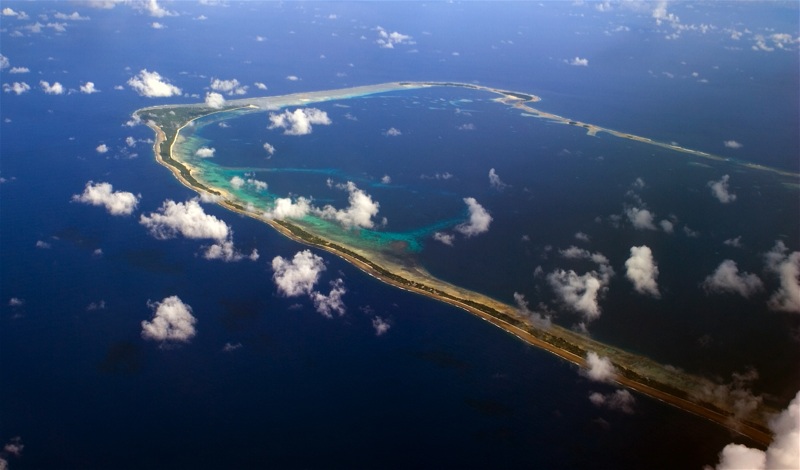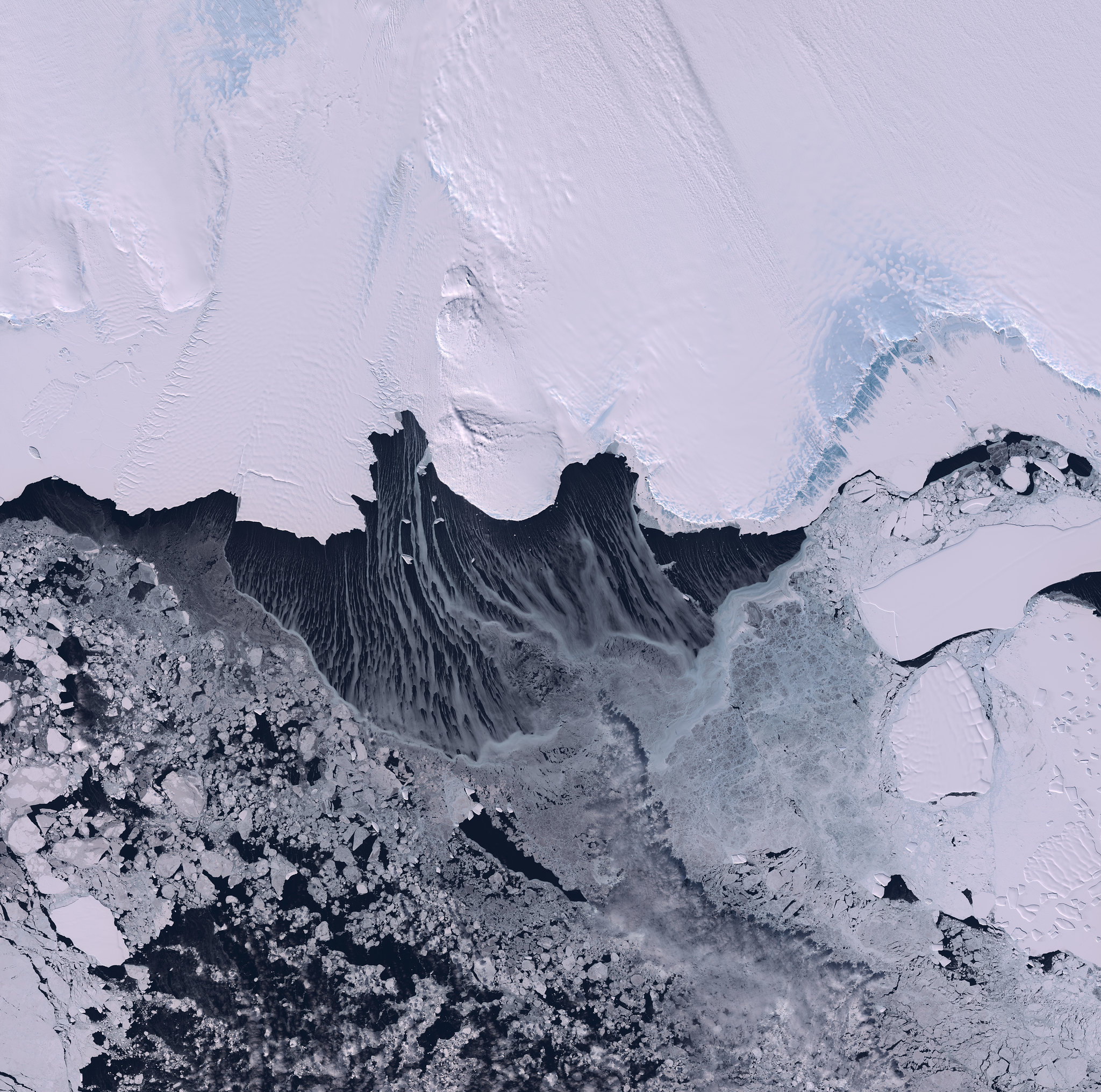“Together, the Antarctic and Greenland Ice Sheets contain more than 99 percent of freshwater ice on Earth. If they both completely melted, they would raise sea level by an estimated 67.4 meters (223 feet). Long-term satellite data indicate that through most of the twentieth century, the ice sheets made very little contribution to sea level, and were nearly in balance in annual snowfall gain and ice or meltwater loss. However, the stability of the ice sheets has changed considerably in the twenty-first century…”
– Ice Sheets Today
“It appears we may have lost control of the West Antarctic ice shelf melting over the 21st century,” Kaitlin Naughten, the study’s lead author and an ocean modeler with the British Antarctic Survey, told reporters in a media briefing. “That very likely means some amount of sea level rise that we cannot avoid.”
– the Washington Post (10-23-2023)
“It got a lot harder to be a glacier in Greenland in the 21st century than it had been even in the 1990s,” said Yarrow Axford, a professor of geological sciences at Northwestern University and a co-author of the paper, published in the journal Nature Climate Change.
– the New York Times (10-23-2023)
Recently Published Research Findings:
Rapid disintegration and weakening of ice shelves in North Greenland
– nature communications (11-07-2023)
ABSTRACT: The glaciers of North Greenland are hosting enough ice to raise sea level by 2.1 m, and have long considered to be stable. This part of Greenland is buttressed by the last remaining ice shelves of the ice sheet. Here, we show that since 1978, ice shelves in North Greenland have lost more than 35% of their total volume, three of them collapsing completely. For the floating ice shelves that remain we observe a widespread increase in ice shelf mass losses, that are dominated by enhanced basal melting rates. Between 2000 and 2020, there was a widespread increase in basal melt rates that closely follows a rise in the ocean temperature. These glaciers are showing a direct dynamical response to ice shelf changes with retreating grounding lines and increased ice discharge. These results suggest that, under future projections of ocean thermal forcing, basal melting rates will continue to rise or remain at high level, which may have dramatic consequences for the stability of Greenlandic glaciers.
Unavoidable future increase in West Antarctic ice-shelf melting over the twenty-first century
– nature climate change (10-23-2023)
ABSTRACT: Ocean-driven melting of floating ice-shelves in the Amundsen Sea is currently the main process controlling Antarctica’s contribution to sea-level rise. Using a regional ocean model, we present a comprehensive suite of future projections of ice-shelf melting in the Amundsen Sea. We find that rapid ocean warming, at approximately triple the historical rate, is likely committed over the twenty-first century, with widespread increases in ice-shelf melting, including in regions crucial for ice-sheet stability. When internal climate variability is considered, there is no significant difference between mid-range emissions scenarios and the most ambitious targets of the Paris Agreement. These results suggest that mitigation of greenhouse gases now has limited power to prevent ocean warming that could lead to the collapse of the West Antarctic Ice Sheet.
Additional Articles . . .

Global sea level rose higher than expected last year. Here’s why – the Washington Post
The rate of global sea level rise follows a trend of rapidly increasing rates over the past 30 years…

A city looked at the sea as a blessing. It’s now sinking into it – the Independent
The ocean has now become an existential threat…

Mexican fishers relocate in wake of sea level rise, raising job concerns – Mongabay
The isolated Pacific nation is trying to build its first football team amid a battle for survival against rising sea levels…

Marshall Islands’ vanishing kit for a team under threat from climate crisis – the Guardian
The isolated Pacific nation is trying to build its first football team amid a battle for survival against rising sea levels…
And Video . . .
Increased melting on the West Antarctic Ice Sheet is now unavoidable
The West Antarctic Ice Sheet will continue to increase its rate of melting over the rest of the century, no matter how much we reduce fossil fuel use…
British Antarctic Survey |October 23, 2023.
Antarctic sea ice at record lows as global temperatures rise
As temperature records fall all over the planet this summer, scientists are also increasingly concerned about what’s happening to the sea ice around Antarctica. William Brangham reports.
PBS NewsHour | August 10, 2023
Northern Greenland’s ice shelves are receding
According to a study, the northern glaciers of Greenland are in danger of causing a “dramatic” rise in sea level.
World News | WION |November 8, 2023
Greenland’s ice shelves are on verge of collapse
The warming oceans worldwide are leading to the rapid melting of ice and glaciers long thought to be stable…
ABC7 | Bay Area News |November 8, 2023
Northern Greenland’s ice shelves are receding
We know the Earth’s atmosphere is warming and it’s thanks to us and our taste for fossil fuels. But how quickly is this melting the ice sheets, ice caps, and glaciers that remain on our planet? That’s what listener David wants to know.
BBC World Service | January 18, 2023
Antarctica: Latest report says melting sea ice ‘not yet irreversible’
In its recently published ‘Impact of Climate Change report,’ the Potsdam Institute for Research warned that while the marine ice sheet is not destabilised yet, the point of no return could come sooner rather than later.
euronews |September 7, 2023









